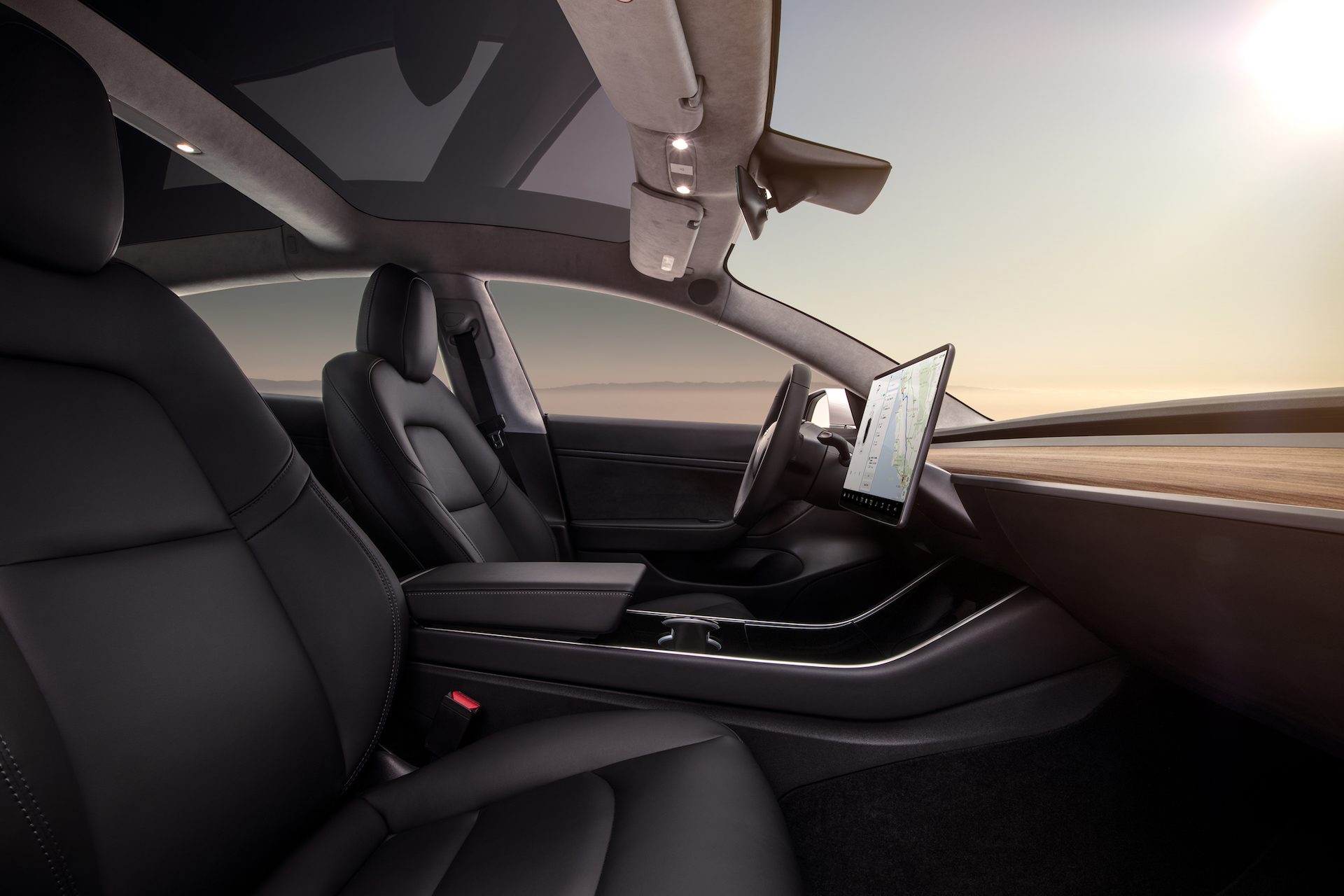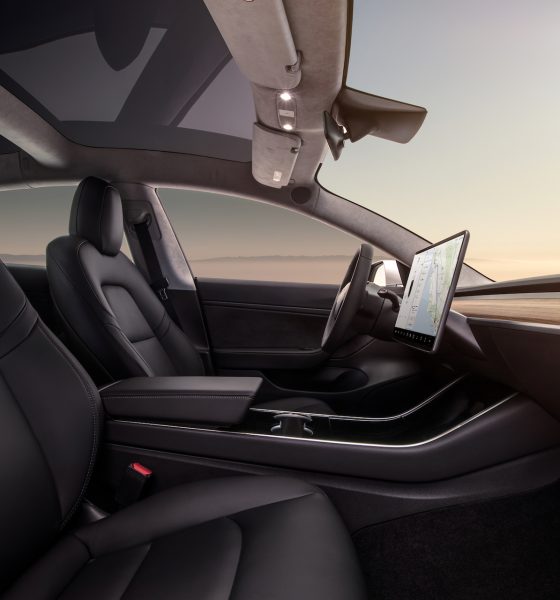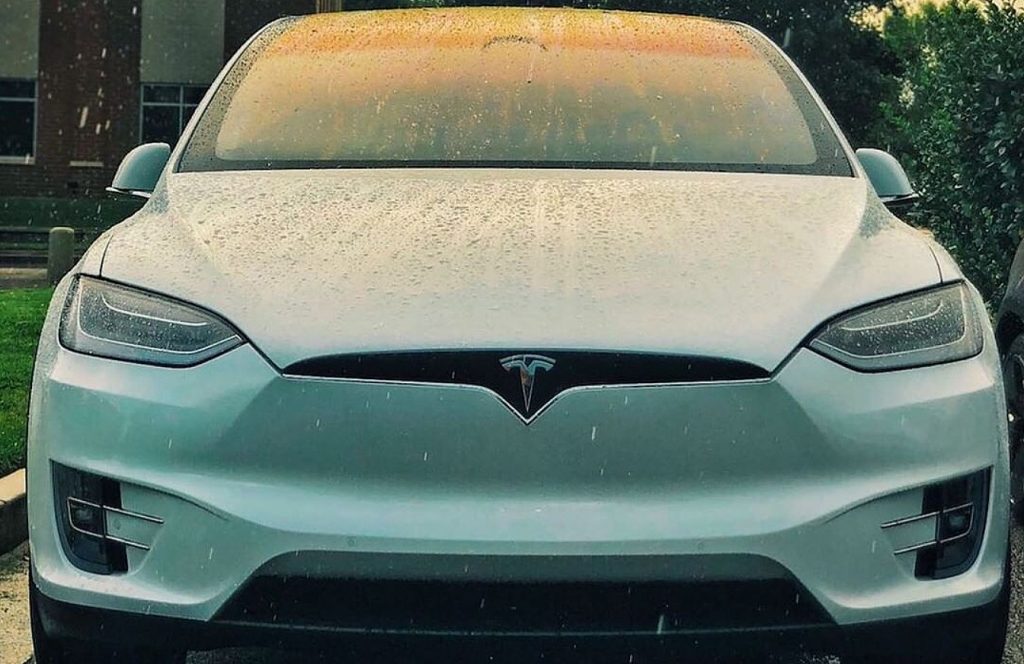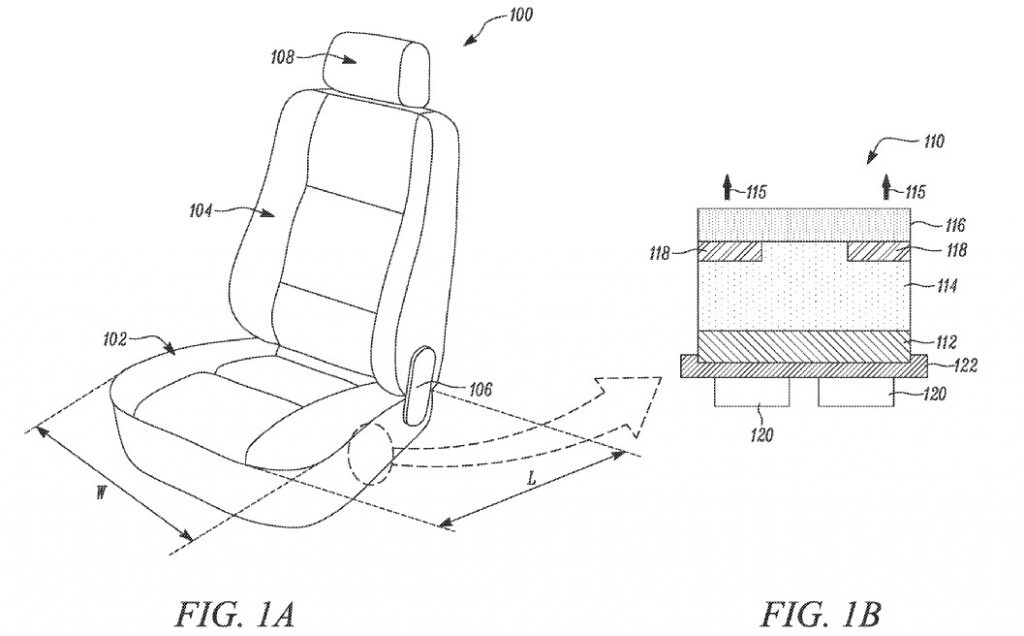

News
Tesla’s near-obsessive efforts to improve efficiency shown in new ventilated seat patent
It is no secret that Tesla’s electric vehicles are among the most efficient in the auto industry. This is shown in the gap between Tesla and its competitors when it comes to battery tech and just how far the company’s vehicles can last between charges.
The Model X, for example, is Tesla’s largest vehicle available today, yet it is far more efficient than competitors from veteran automakers such as the Audi e-tron and the Jaguar I-PACE, both of which are smaller and newer than the Silicon Valley-based company’s flagship crossover. Part of this is likely due to Tesla’s proprietary battery chemistry, as well as the design and components of its vehicles themselves.
Tesla optimizes its vehicles’ efficiency in several ways, from equipping its cars with software that optimizes the battery pack to using materials that simply consume less power. The less power is consumed by the car’s systems, after all, the more power there is that could be used to turn the wheels of the vehicle.

An example of this is described in a recently-published patent titled “Vehicle Seat with Integrated Temperature-Control System.” Tesla notes in its patent that heated seats could easily be very inefficient, as they require heat to travel through multiple layers of material.
“Attempts to provide air ventilation through the seat foam are typically insufficient to remove excess heat and provide a comfortable environment for the occupant. Further, conventional heating systems are bulky, occupy space in the seat which typically requires the seat to be thicker, and are inefficient in heating the seat as the heat typically must travel through multiple layers and heats regions of the seat that the occupant does not contact. Hence, there is a need for an improved temperature-control system for vehicle seats,” Tesla noted.
The electric car maker describes how its ventilated seat patent works as follows.
“The temperature-control system is associated with at least one of a seating portion and a backrest portion of the seat. The temperature control system includes a base layer. The temperature-control system includes an intermediate layer disposed adjacent to the base layer. The intermediate layer allows fluid to flow through it. The temperature-control system includes a cover layer disposed adjacent to the intermediate layer. The temperature-control system also includes at least one heating element disposed between the intermediate layer and the cover layer. The temperature-control system further includes a fluid pump to provide the flow of fluid through the intermediate layer,” the company wrote.

Tesla explains that the design outlined in its patent provides a low-cost, low-noise, power-efficient, and effective way of cooling or heating a vehicle’s seats. The company also explained that its patent could be incorporated in any seat, regardless of size and shape.
Tesla’s patent for its “Vehicle Seat with Integrated Temperature-Control System” could be accessed in full here.
Being a patent application, it is unknown if Tesla has or will utilize the design it described in the recently published document. Yet, regardless of this, it is difficult to not acknowledge the electric car maker’s constant efforts to improve its vehicles’ efficiency. In a way, the publication of this patent comes at a rather appropriate time for Tesla too, as the company is preparing to unveil its next vehicle, a pickup truck, later this year.
Pickup trucks are by tradition not the most efficient cars on the road, and even the Rivian R1T, a vehicle designed from the ground up to be all-electric, requires a massive 180 kWh battery pack to hit 400 miles of range. That’s a range that the Raven Tesla Model S is already approaching with its 100 kWh battery pack.
At this point in the EV race, it’s evident that the efficiency of Tesla’s electric cars is top-notch, and it will likely take a while before competitors can come close. Rivals will come for the company from several fronts, including veteran automakers and young, upstart manufacturers. But by being a moving target, it will likely be a very challenging task to catch up to Tesla. Very few companies out there could be just as dedicated and near-obsessive with improvement and innovation, after all.

News
Tesla (TSLA) receives “Buy” rating and $551 PT from Canaccord Genuity
He also maintained a “Buy” rating for TSLA stock over the company’s improving long-term outlook, which is driven by autonomy and robotics.

Canaccord Genuity analyst George Gianarikas raised his Tesla (NASDAQ:TSLA) price target from $482 to $551. He also maintained a “Buy” rating for TSLA stock over the company’s improving long-term outlook, which is driven by autonomy and robotics.
The analyst’s updated note
Gianarikas lowered his 4Q25 delivery estimates but pointed to several positive factors in the Tesla story. He noted that EV adoption in emerging markets is gaining pace, and progress in FSD and the Robotaxi rollout in 2026 represent major upside drivers. Further progress in the Optimus program next year could also add more momentum for the electric vehicle maker.
“Overall, yes, 4Q25 delivery expectations are being revised lower. However, the reset in the US EV market is laying the groundwork for a more durable and attractive long-term demand environment.
“At the same time, EV penetration in emerging markets is accelerating, reinforcing Tesla’s potential multi‑year growth runway beyond the US. Global progress in FSD and the anticipated rollout of a larger robotaxi fleet in 2026 are increasingly important components of the Tesla equity story and could provide sentiment tailwinds,” the analyst wrote.
Tesla’s busy 2026
The upcoming year would be a busy one for Tesla, considering the company’s plans and targets. The autonomous two-seat Cybercab has been confirmed to start production sometime in Q2 2026, as per Elon Musk during the 2025 Annual Shareholder Meeting.
Apart from this, Tesla is also expected to unveil the next-generation Roadster on April 1, 2026. Tesla is also expected to start high-volume production of the Tesla Semi in Nevada next year.
Apart from vehicle launches, Tesla has expressed its intentions to significantly ramp the rollout of FSD to several regions worldwide, such as Europe. Plans are also underway to launch more Robotaxi networks in several more key areas across the United States.
News
Waymo sues Santa Monica over order to halt overnight charging sessions
In its complaint, Waymo argued that its self-driving cars’ operations do not constitute a public nuisance, and compliance with the city’s order would cause the company irreparable harm.

Waymo has filed a lawsuit against the City of Santa Monica in Los Angeles County Superior Court, seeking to block an order that requires the company to cease overnight charging at two facilities.
In its complaint, Waymo argued that its self-driving cars’ operations do not constitute a public nuisance, and compliance with the city’s order would cause the company irreparable harm.
Nuisance claims
As noted in a report from the Los Angeles Times, Waymo’s two charging sites at Euclid Street and Broadway have operated for about a year, supporting the company’s growing fleet with round-the-clock activity. Unfortunately, this has also resulted in residents in the area reportedly being unable to sleep due to incessant beeping from self-driving taxis that are moving in and out of the charging stations around the clock.
Frustrated residents have protested against the Waymos by blocking the vehicles’ paths, placing cones, and “stacking” cars to create backups. This has also resulted in multiple calls to the police.
Last month, the city issued an order to Waymo and its charging partner, Voltera, to cease overnight operations at the charging locations, stating that the self-driving vehicles’ activities at night were a public nuisance. A December 15 meeting yielded no agreement on mitigations like software rerouting. Waymo proposed changes, but the city reportedly insisted that nothing would satisfy the irate residents.
“We are disappointed that the City has chosen an adversarial path over a collaborative one. The City’s position has been to insist that no actions taken or proposed by Waymo would satisfy the complaining neighbors and therefore must be deemed insufficient,” a Waymo spokesperson stated.
Waymo pushes back
In its legal complaint, Waymo stated that its “activities at the Broadway Facilities do not constitute a public nuisance.” The company also noted that it “faces imminent and irreparable harm to its operations, employees, and customers” from the city’s order. The suit also stated that the city was fully aware that the Voltera charging sites would be operating around the clock to support Waymo’s self-driving taxis.
The company highlighted over one million trips in Santa Monica since launch, with more than 50,000 rides starting or ending there in November alone. Waymo also criticized the city for adopting a contentious strategy against businesses.
“The City of Santa Monica’s recent actions are inconsistent with its stated goal of attracting investment. At a time when the City faces a serious fiscal crisis, officials are choosing to obstruct properly permitted investment rather than fostering a ‘ready for business’ environment,” Waymo stated.
News
Tesla FSD v14.2.2 is getting rave reviews from drivers
So far, early testers have reported buttery-smooth drives with confident performance, even at night or on twisty roads.

Tesla Full Self-Driving (Supervised) v14.2.2 is receiving positive reviews from owners, with several drivers praising the build’s lack of hesitation during lane changes and its smoother decision-making, among others.
The update, which started rolling out on Monday, also adds features like dynamic arrival pin adjustment. So far, early testers have reported buttery-smooth drives with confident performance, even at night or on twisty roads.
Owners highlight major improvements
Longtime Tesla owner and FSD user @BLKMDL3 shared a detailed 10-hour impression of FSD v14.2.2, noting that the system exhibited “zero lane change hesitation” and “extremely refined” lane choices. He praised Mad Max mode’s performance, stellar parking in locations including ticket dispensers, and impressive canyon runs even in dark conditions.
Fellow FSD user Dan Burkland reported an hour of FSD v14.2.2’s nighttime driving with “zero hesitations” and “buttery smooth” confidence reminiscent of Robotaxi rides in areas such as Austin, Texas. Veteran FSD user Whole Mars Catalog also demonstrated voice navigation via Grok, while Tesla owner Devin Olsen completed a nearly two-hour drive with FSD v14.2.2 in heavy traffic and rain with strong performance.
Closer to unsupervised
FSD has been receiving rave reviews, even from Tesla’s competitors. Xpeng CEO He Xiaopeng, for one, offered fresh praise for FSD v14.2 after visiting Silicon Valley. Following extended test drives of Tesla vehicles running the latest FSD software, He stated that the system has made major strides, reinforcing his view that Tesla’s approach to autonomy is indeed the proper path towards autonomy.
According to He, Tesla’s FSD has evolved from a smooth Level 2 advanced driver assistance system into what he described as a “near-Level 4” experience in terms of capabilities. While acknowledging that areas of improvement are still present, the Xpeng CEO stated that FSD’s current iteration significantly surpasses last year’s capabilities. He also reiterated his belief that Tesla’s strategy of using the same autonomous software and hardware architecture across private vehicles and robotaxis is the right long-term approach, as it would allow users to bypass intermediate autonomy stages and move closer to Level 4 functionality.








